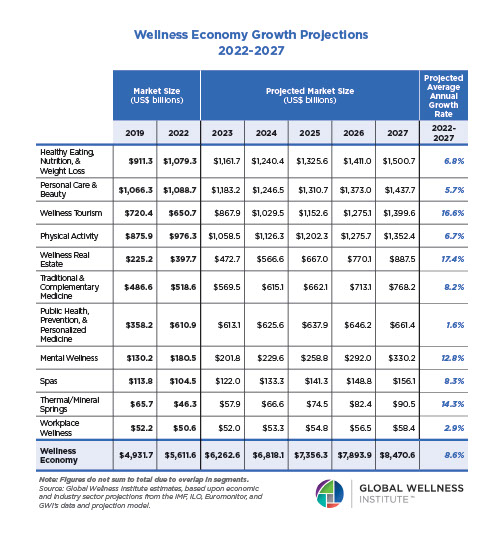A Holistic Approach to Weight Management in the Workplace: What HR Leaders Need to Know
By: Gloria Treister, HHP
With the increasing popularity of GLP-1 receptor agonists like Ozempic, Wegovy, Mounjaro, and Zepbound, HR and benefits leaders are now faced with an important question: How can we support employees in achieving sustainable, long-term weight management?
The answer lies in a comprehensive, functional wellness approach—one that integrates medication when necessary but prioritizes root-cause solutions, including metabolic health, lifestyle education, and personalized wellness strategies. Factors such as insulin resistance, chronic inflammation, gut microbiome imbalances, and exposure to hormone-disrupting toxins can make weight loss particularly challenging—even for employees who follow strict diets and exercise regimens. As HR leaders consider weight management solutions, it’s essential to provide employees with access to functional wellness strategies that address the root causes of weight struggles rather than just the symptoms.
A Functional Wellness Approach to Weight Management
A comprehensive weight management strategy should include:
- Metabolic Health Support: Addressing insulin resistance, hormonal imbalances, and metabolic syndrome through targeted education and lifestyle modifications.
- Nutritional Guidance Beyond Calories: Teaching employees how inflammatory foods, gut health, and micronutrient deficiencies impact weight regulation.
- Environmental Toxin Awareness: Helping employees understand how exposure to endocrine-disrupting chemicals (found in plastics, personal care products, and processed foods) can interfere with metabolism.
- Personalized Coaching & Support: Providing access to health coaches, dietitians, and wellness experts for individualized guidance instead of one-size-fits-all plans.
- Mindful Stress & Sleep Management: Educating employees on the role of chronic stress and sleep deprivation in weight gain, particularly how cortisol (the stress hormone) affects fat storage.
Understanding GLP-1 Medications & How They Work
With the rising popularity of GLP-1 medications, it’s crucial for HR and benefits leaders to understand how they work and where they fit into a broader weight management strategy. What Are GLP-1 and GIP?
GLP-1 (Glucagon-Like Peptide-1): A hormone that slows digestion, increases satiety (fullness), and regulates blood sugar levels.
GIP (Glucose-Dependent Insulinotropic Polypeptide): Another gut hormone that enhances insulin secretion and may influence fat metabolism.
Key Differences Between Medications
Semaglutide (Ozempic, Wegovy) mimics GLP-1, helping individuals feel full longer and eat less. However, it does not directly impact hunger cues—its primary mechanism is delaying stomach emptying and regulating blood sugar levels.
Tirzepatide (Mounjaro, Zepbound) mimics both GLP-1 and GIP, offering a dual-action approach. GLP-1 increases satiety and slows digestion. GIP further enhances insulin sensitivity and reduces hunger signals.
How These Medications Affect Hunger Hormones
Leptin (“the satiety hormone”) signals when you are full. GLP-1 medications may help improve leptin sensitivity, making it easier to recognize fullness.
Ghrelin (“the hunger hormone”) stimulates appetite. Tirzepatide has shown a stronger effect in lowering ghrelin levels, making it more effective at reducing hunger compared to semaglutide.
While these medications support weight loss, they do not address the underlying causes of metabolic dysfunction, which is why a comprehensive strategy is necessary. And, despite their effectiveness, these medications come with potential downsides, including nausea, loss of muscle mass, and dependency on continued use. Research indicates that without sustained lifestyle changes, weight regain is common after stopping the medication [JAMA].
Integrating GLP-1s into a Holistic Weight Management Plan
While GLP-1 medications can be effective, they should be viewed as part of a broader wellness strategy. Research suggests that long-term success with GLP-1s depends on complementary lifestyle changes, including improved dietary habits, increased physical activity, and support for metabolic health & gut microbiome balance
For HR leaders, this means creating a benefits package that:
- Covers medication access where appropriate, while also funding education and coaching to ensure employees develop sustainable habits.
- Provides functional wellness resources so employees can understand their metabolism, gut health, and hormonal balance.
- Encourages a culture of non-judgmental, inclusive support, recognizing that weight struggles are multifactorial and highly individualized.
Empowering Employees with the Right Tools
At the core of workplace wellness should be education and empowerment. Employees need to understand the “why” behind their weight challenges and receive the right tools to take control of their health. A Functional Wellness approach ensures that weight management is not a temporary fix but a lifelong strategy for improved health and productivity. By shifting the focus from quick fixes to long-term well-being, HR leaders have the opportunity to make a profound impact—not just on their employees’ waistlines but on the success and resilience of their organizations.
References
Nature: GLP-1 and GIP Mechanisms
JAMA: Weight Regain After Stopping GLP-1s
About the Author
Gloria Treister, HHP, is a board-certified holistic health practitioner, functional wellness consultant, and corporate wellness strategist. With over four decades in healthcare, she has pioneered holistic and functional medicine approaches to help individuals and organizations optimize health, longevity, and productivity. As the founder of Wellness Evolution, author of Wellness 101: Simple Steps to Good Health, and an advocate for proactive wellness strategies, she empowers companies to integrate science-based wellbeing initiatives that drive sustainable employee health and performance. Gloria is an active member of the Workplace Wellbeing Initiative of the Global Wellness Institute and is dedicated to reshaping the future of workplace wellness. Learn more about Gloria at www.WellnessEvolution.com
**Disclaimer:**
The blog submissions featured on this site represent the research and opinions of the individual authors. The Global Wellness Institute and the Workplace Wellbeing Initiative are not responsible for the content provided. We serve as an outlet for health coaches to share their blog work and insights. The views expressed are solely those of the authors and do not necessarily reflect the official policy or position of the Global Wellness Institute or the Workplace Wellbeing Initiative. Readers are encouraged to consult with a qualified healthcare professional for specific health concerns.
